#plethodontidae
Text
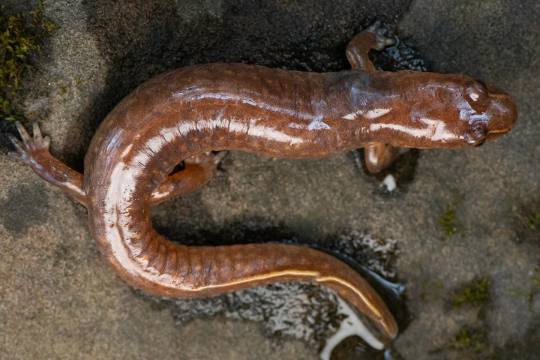

Northern Spring Salamander (Gyrinophilus porphyriticus), family Plethodontidae, Western MD, USA
photograph by Brady O'brien
#spring salamander#salamander#gyrinophilus#plethodontidae#amphibian#herpetology#animals#nature#north america
253 notes
·
View notes
Text

A red salamander (Pseudotriton ruber) emerges from a stream in North Georgia, USA
by Noah K. Fields
#red salamander#salamanders#amphibians#pseudotriton ruber#pseudotriton#plethodontidae#urodela#amphibia#chordata#wildlife: georgia#wildlife: usa#wildlife: north america
909 notes
·
View notes
Text
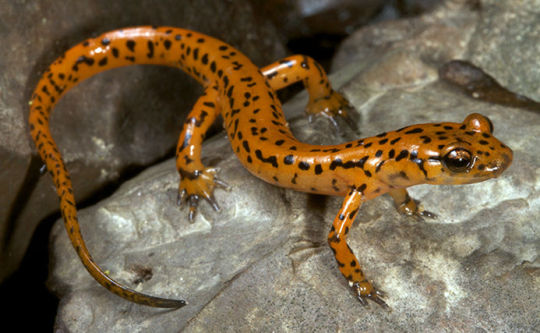


Shine a Light on the Cave Salamander
The cave salamander, also known as the spotted salamander (Eurycea lucifuga) is a species of salamander found throughout the eastern United States, particularly in the Appalachian mountains. As the name implies, they are most common in caves with exposed limestone or other calcifying rocks. However, they may also occur under rocks or logs, or in streams in deciduous forests; anywhere that's dark and moist.
The spotted salamander spends almost its entire life in these 'twilight zones'. Mating is believed to occur in summer or early fall, when male salamanders begin to seek out females by tracking their pheromones. Once a male finds a potential mate, he nudges her and rubs his chin on her head until she indicates she's receptive. At that point she straddles his tail while the two walk in tandem. The male then drops a spermatophore-- a sack full of sperm-- on the ground, and the female picks it up with her cloaca. The female lays a clutch of 5 to 120 eggs, but not until several months after fertilization between September and February.
The eggs take about 20 days to hatch, and larvae entirely aquatic, complete with gills and webbed fingers. Individuals can take anywhere from 6 to 18 months to fully develop, at which point they leave the water and become fully nocturnal. However, most individuals don't stray far from their original spawning territory, and adults do not maintain or defend set territories.
Despite their reclusive lifestyle, cave salamanders are quite striking. Adults are bright orange or red with black spots, and can be anywhere from 10 to 20 cm (4 to 8 in) in length. Over half of that length is taken up by the tail, and males have a longer tail than females. As lungless salamanders, E. lucifuga breathes through its skin and the tissues around its mouth-- while useful for an aquatic animal, this type of respiration makes it essential that the cave salamander remains in a wet environment.
Both larvae and adults are insectivorous, consuming a number of invertebrates including spiders, snails, beetles, earthworms, and ticks. Potential predators of the spotted salamander include bats, shrews, racoons, and snakes, though few specifics are known about the species' ecology. To deter these predators, E. lucifuga adopts a defensive posture in which they coil their body and wave their tail over their head. In addition, they secrete a foul-tasting substance from their skin, and their bright coloration likely warns potential predators that they won't make a good meal.
Conservation status: The IUCN has classified the cave salamander as Least Concern, although they are listed as Endangered in several of the American states in which they occur. The greatest threat to the species is thought to be human disturbance or habitat degredation from pollution of the water systems which flow through the caves where E. lucifuga resides.
If you like what I do, consider leaving a tip or buying me a kofi!
Photos
Todd Pierson
Michael Graziano
#cave salamander#Urodela#Plethodontidae#brook salamanders#lungless salamanders#salamanders#amphibians#caves#cave amphibians#north america#eastern north america#biology#zoology#ecology#animal facts
159 notes
·
View notes
Photo

Northern grotto salamander (Eurycea nerea) inside an Ozark cave system in Missouri, U.S.
Chad Harrison
839 notes
·
View notes
Text

Yellow-eyed Ensatina
#yellow eyed ensatina#salamander#Ensatina eschscholtzii xanthoptica#Ensatina eschscholtzii#Amphibia#Urodela#Plethodontidae#Plethodontinae#Ensatina#upl
39 notes
·
View notes
Text
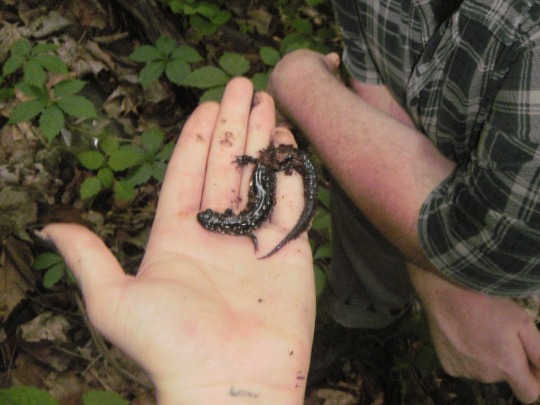

Northern Slimy Salamander (Plethodon glutinosus)
115 notes
·
View notes
Photo
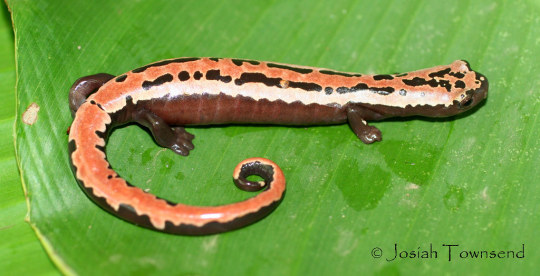
Bolitoglossa mexicana, Rio Negro Honduras
Bolitoglossine salamanders are usually arboreal salamanders, which are often found on leaves and tree trunks after rains. They are also sometime found in epiphytic bromeliads, ferns, and other plants.
Bolitoglossines are in the family Plethodontidae, the lungless salamanders. They respirate through the skin and the lining of their mouths. This genus is also referred to as the “mushroom tongued salamanders”. They use that distinctive tongue, by shooting it out, almost chameleon style, to grab small invertebrate prey, and pull it back into their mouths.
These salamanders have 2 distinct foot types that help them climb trees and other plants: 1. heavily webbed (like the salamander pictured above) or 2. long thin toes. They are also capable of tail autonomy and regrowth.
This genus (Bolitoglossa) is found only in the American tropics, concentrated mostly in Central America. 1/5 of all salamander species are in this genus, making Central America a major diversity hotspot for salamanders (behind only the Appalachian Mountain region and Pacific Northwest of North America).
This is absolutely one of my favorite groups of animals!
photograph by Josiah Townsend | Flickr CC
#bolitoglossa#salamander#plethodontidae#amphibian#central america#south america#mexico#animals#nature#science#herpetology
76 notes
·
View notes
Text
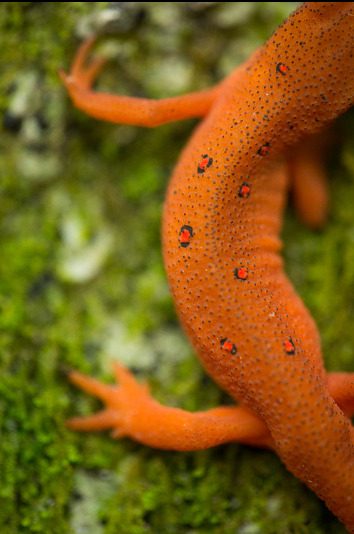
"Body Language" by Mac Stone
#salamander#red salamander#orange#red#amphibians#amphibia#pseudotriton#pseudotriton ruber#plethodontidae#animals
25 notes
·
View notes
Text
we found all seven of these under one log

#salamanders#herping#herpetology#plethodontidae#plethodon cinereus#red backed salamander#ambystoma maculatum#spotted salamander
12 notes
·
View notes
Text
The Vandyke's salamander (Plethodon vandykei) is a washington endemic species living near cold mountainous streams and waterfall splash zones.
Salamanders in the family Plethodontidae are called lungless salamanders due to them breathing through their skin rather than lungs. They depend on moisture to be able to breath so they're even more delicate than most amphibians.
Of the almost 800 species of salamanders ~400 of them are apart of the family Plethodontidae with all of them being in the America's besides 8 species. Many of these species are at risk of extinction because of the delicate habitat they can inhabit.
I just really love these dudes and want more people to be able to appreciate them like :)
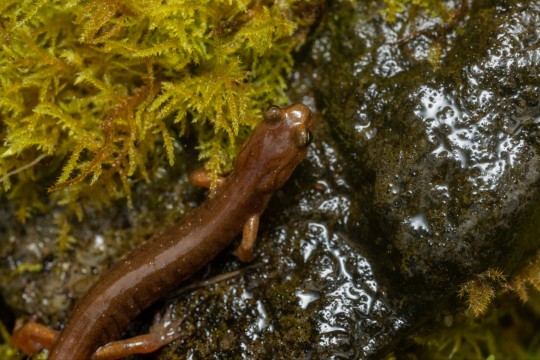
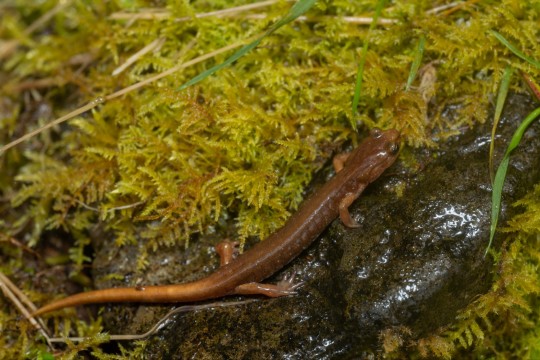
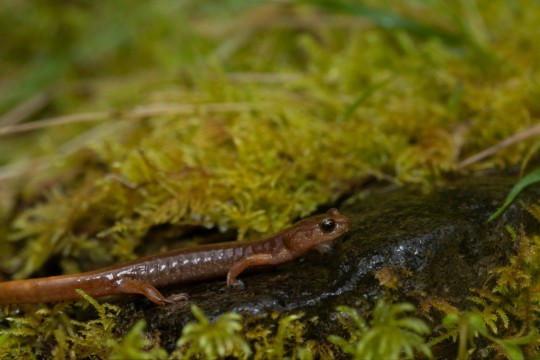

#Plethodontidae#salamanders#caudata#plethodon#herpetology#wildlife photography#ecology#biology#endangered species#nature photography#macro#PNW
111 notes
·
View notes
Text

#1 to me. siskiyou mountains salamander (Plethodon stormi)
2 notes
·
View notes
Text

Robust Climbing Salamander (Bolitoglossa robusta), family Plethodontidae, Tapanti National Park, Costa Rica
Photograph by Piotr Naskrecki
#climbing salamander#arboreal salamander#salamander#bolitoglossa#bolitoglossine#plethodontidae#amphibian#herpetology#animals#nature#central america
9K notes
·
View notes
Text
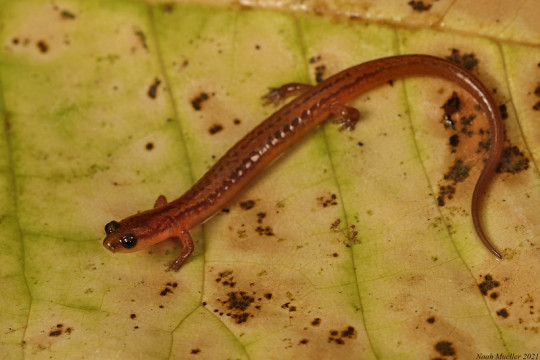
A many-ribbed salamander (Eurycea multiplicata) in western Arkansas, USA
by Noah Mueller
#many ribbed salamander#salamanders#amphibians#eurycea multiplicata#eurycea#Plethodontidae#urodela#amphibia#chordata#wildlife: arkansas#wildlife: usa#wildlife: north america
169 notes
·
View notes
Text
Uncharismatic Fact of the Day
In the animal kingdom, sentimentality doesn't go very far. Female red back salamanders spend about two months guarding their clutch, which contains anywhere from 4 to 17 eggs. However, if any of the eggs die she won't hesitate to eat them-- not only does she gain valuable nutrients, but eating the dead eggs helps prevent the spread of infection to the rest of the clutch. Though it may seem gruesome, this behavior is common among egg-laying animals.

(Image: A red back salamander (Plethodon cinereus) by Will Lattea)
If you send me proof that you’ve made a donation to UNRWA or another organization benefiting Palestinians– including esim donations– I’ll make art of any animal of your choosing.
#red back salamander#Urodela#Plethodontidae#woodland salamanders#lungless salamanders#salamanders#amphibians#uncharismatic facts
80 notes
·
View notes
Photo
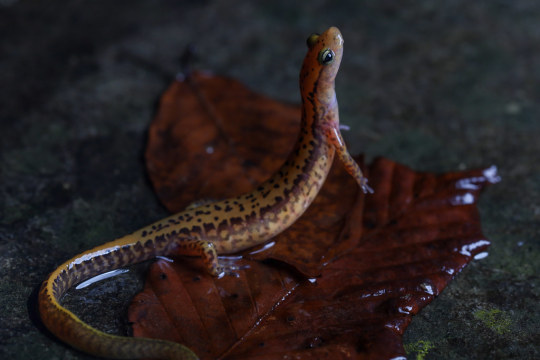
Long-tailed salamander (Eurycea longicauda) in Georgia, U.S.
Noah K. Fields
643 notes
·
View notes
Text

Salamander Saturday!
#two of these little guys near the woodpile#valley and ridge salamander#plethodontidae#salamander#gardening
5 notes
·
View notes